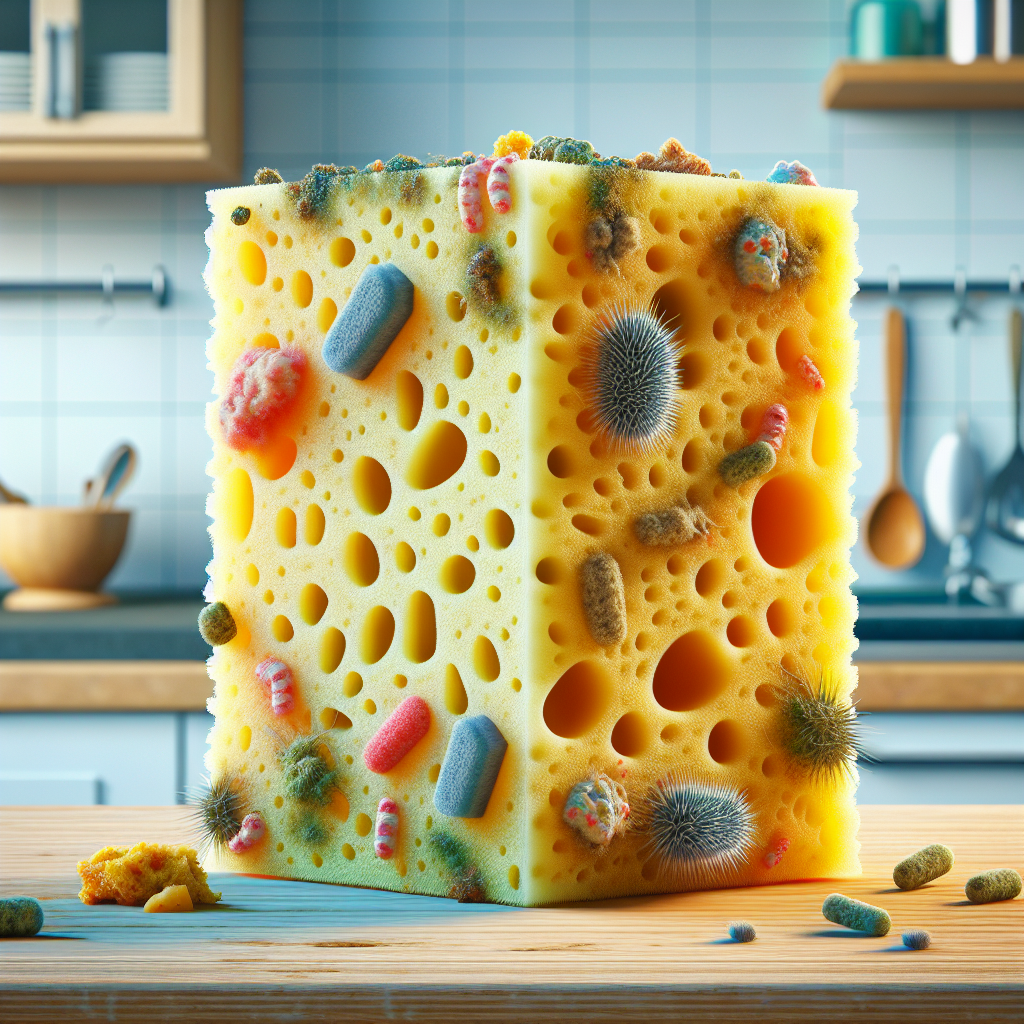“`html
The Filthy Item in Your Home You Forget to Clean
When it comes to maintaining a clean and healthy home, we often think about dusting surfaces, vacuuming carpets, and scrubbing bathrooms. However, there’s a hidden culprit lurking in our kitchens that frequently goes unnoticed—the humble kitchen sponge. This seemingly innocent item is a breeding ground for bacteria and grime, making it essential to prioritize its cleanliness to ensure optimal hygiene in your home.
Why Your Kitchen Sponge Is a Germ Hotspot
You might be surprised to learn that kitchen sponges can be more contaminated than your toilet seat. This is primarily due to their ability to trap food particles, moisture, and untreated liquids, creating the perfect conditions for bacteria to flourish. Here’s why your sponge deserves your attention:
- Absorbency: Kitchen sponges are designed to absorb liquids. This means they easily soak up food remnants and spills, which can lead to rapid bacterial growth.
- Moist Environment: A wet sponge is a comfortable home for bacteria. The dampness encourages the growth of microorganisms like E. coli and Salmonella.
- Poor Drying Conditions: Many people leave their sponges in dark, covered areas where they won’t dry properly, further exacerbating the problem.
The Statistics Speak for Themselves
Research has shown that, on average, a kitchen sponge contains more than 10 million bacteria per square inch. Additionally, a study from the National Sanitation Foundation rated sponges as one of the dirtiest items in the home. Here’s a closer look at some troubling statistics regarding sponges:
- The average sponge can harbor harmful bacteria, including Salmonella, E. coli, and Staphylococcus aureus.
- Sponges can transfer bacteria to surfaces they come in contact with, including countertops and utensils.
- Using a contaminated sponge can lead to foodborne illnesses if proper precautions aren’t taken during cooking and meal prep.
How Often Should You Clean Your Sponge?
To minimize the health risks associated with dirty sponges, it’s crucial to establish a regular cleaning routine. Here are some recommendations:
- Daily: Rinse your sponge thoroughly after each use to remove food particles.
- Weekly: Sanitize your sponge at least once a week using one of the following methods:
- Microwave: Dampen the sponge and place it in the microwave for 1-2 minutes. Ensure it’s wet to avoid fire hazards.
- Dishwasher: Place the sponge on the top rack of your dishwasher during your cleaning cycle.
- Soak in Bleach Solution: Mix one tablespoon of bleach in a gallon of water, soak the sponge for five minutes, and rinse thoroughly.
- Vinegar or Lemon Juice: Soak your sponge in undiluted vinegar or lemon juice for about 10 minutes.
Signs It’s Time to Replace Your Sponge
Even with regular cleaning, there comes a time when your sponge simply can’t do the job anymore. Here are some indications that it’s time for a new sponge:
- Odor: If your sponge has a persistent foul smell, it’s time to replace it.
- Visible Wear: Rips, tears, or significant wear and tear indicate it’s no longer effective.
- Color Changes: If your sponge changes color, especially after several uses, it might have accumulated too much bacteria.
Alternative Cleaning Tools
If you’re concerned about the germs in traditional sponges, consider switching to alternative cleaning tools:
- Microfiber Cloths: These are reusable, wash easily, and can effectively trap dirt and bacteria.
- Brushes: Use scrub brushes that can be sanitized more thoroughly than sponges.
- Reusable Silicone Sponges: These are designed to be cleaned easily and last longer than conventional sponges.
Conclusion
While we often overlook kitchen sponges in our cleaning routine, these small tools hold more grime than we anticipate. Regular cleaning and replacement of your sponge are vital to ensure that your kitchen remains a safe environment for food preparation. By understanding the risks associated with dirty sponges and implementing effective cleaning methods, you can protect yourself and your family from harmful bacteria. So, next time you’re tidying up, don’t forget to give your sponge the attention it deserves!
“`
